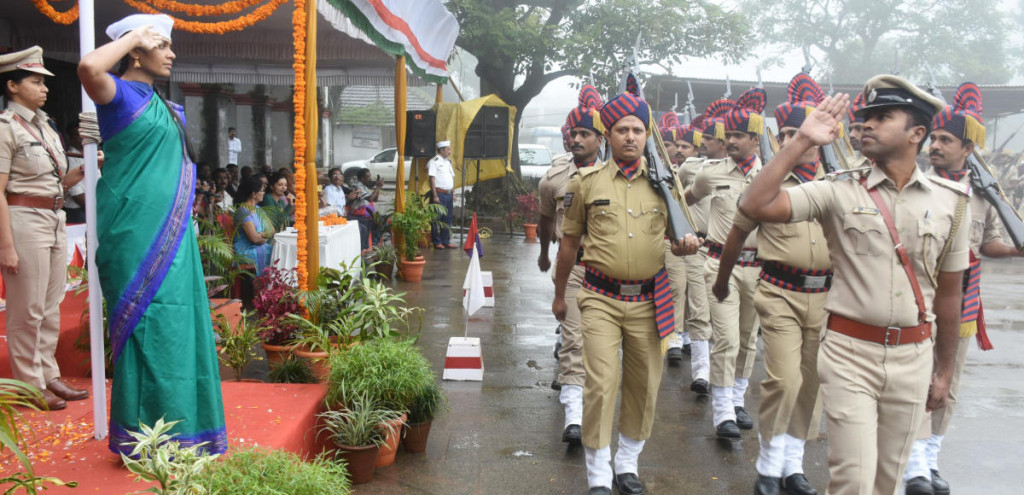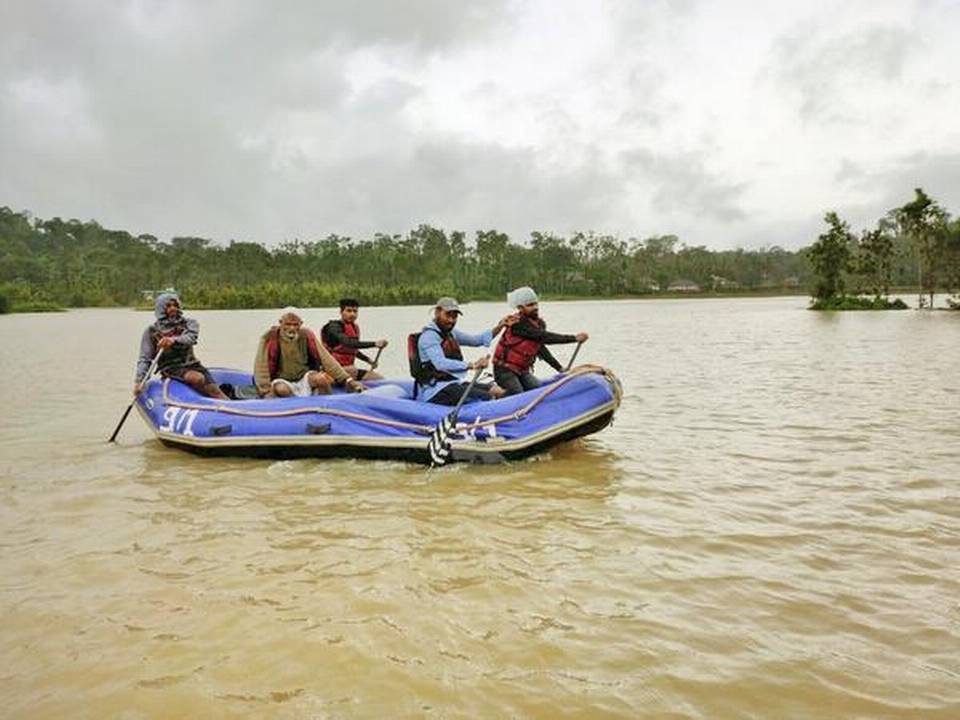A fifteen-minute drive down Bollarimadu village on Madikeri-Virajpet Road leads one to a magnificent edifice proudly displaying the name of Puttichanda family.
Madikeri :
A fifteen minute drive down Bollarimadu village on Madikeri-Virajpet Road leads one to a magnificent edifice proudly displaying the name of Puttichanda family. The over 150-year-old traditional abode stands tall alongside picturesque surroundings. This proud edifice is the ‘Ain Mane’ (original house) or ‘Ballya Mane’ (big house) of the Puttichanda family.
Among the 650-odd houses of its kind, ‘Ain Mane’ is the sacred dwelling of a Kodava family. “Not just a dwelling place, it is equivalent to a temple, a court, and a place of cultural importance,” explains Bacharaniyanda Appanna, a Kodava historian.
While modern houses are abbreviated to BHK and have minimum segments, the Ain Mane of Kodavas is magnificent, with each part of the house having cultural significance. “Roughly, the Ain Mane has 39 distinctive segments or parts that are named in Kodava language. While there are three types – Mandh Mane, Othe Pore, Madak Mane — they all have a certain common and must features,” adds Appanna.
Mundh Mane is the most popular among such magnificent houses. It has an opening facing the sky at the centre of the house. (Mundh in Kodava language means courtyard). Othe Pore roughly translates into a single-roofed house (without a courtyard) and Madak is extinct.
“Madak Mane used to be L-shaped and this did not work well in Kodagu’s weather, especially during monsoon as the L-shaped corner of the house often leaked. It was rather less scientifically built,” opines Appanna.
These traditional houses also took charge as a protective fort during the British period. Any intruder into the property could be detected over a mile away from the actual abode as these houses have elaborate entrances.
’Vaade’ or ‘Bendode’ forms the first part of Ain Mane and is a non-cultivated land. It was used to welcome guests . Then there is an elaborate alley ‘ooni’,” says Appanna.
“There is a traditional wooden carved window facing the entrance and one could detect any intruder from inside the house. This window maintained secrecy,” says Don Devaiah, a member of Puttichanda family. He also adds that in olden days, the bride saw the groom from inside the house through this window.
“Kodagu depended on Kerala for most of its trade. The two regions were trade-bound, which also resulted in exchange of culture and architecture; the creative craftsmanship of Kerala artisans is visible in Ain Manes of Kodagu,” says Appanna.
He adds that the entrance of the house faced the East and there was always a back exit –Kunnibade. Each part of the house has its own personality and Apanna says that there are some sacrosanct segments of the house. “’Aimara’, a pillar standing at the entrance of an aisle, is reserved only for the head of the family; family disputes were solved by the head of the family at this place. ‘Kannikamba’ is a sacred pillar located on the south-west corner of the house and has been given a godly figure. ‘Kanni kombre’ is the sacred room and is located in the south-west corner; this is the puja room,” explains Appanna.
Apart from the sanctity, the architecture of the house is also scientific. The foundation for the house was laid differently and is said to be earthquake-proof as the foundation sat on a strong plinth that was left untouched for over a year so that the earth settled down following the onset of summer and monsoon months. The house also had a secret subway, which was often used to escape from an enemy attack during the ancestral time. “Weapons and a torch smeared with pork fat and oil was always hidden in the path of the subway, which helped in the escape plan,” explains Appanna. “The modern underground drainage system too was present in the ‘Mundh Mane’,” says Patrapanda Pavithra Achappa, a resident of Bollarimadu village .
While the house was lively with many family members residing under one roof in the ancient times, in this modern era the house echoes with laughter and celebrations only during Kodava festivals.
“Puttari, Cauvery Sankramana and Kail Podh are a few festivals that are celebrated by the entire family at Ain Mane. The ritualistic annual ceremony observed to remember the ancestors – Karanaido – is also celebrated at Ain Mane. Nevertheless, a lamp is always lit at the house and families take turns to light the lamp – once in the morning and once in the evening every day. Every member of the family contributes certain amount for the maintenance of the ancestral house,” says Ammanichanda Ranju, whose Ain Mane is at V Badaga.
Apart from the Kodava festivals, the Ain Manes are thrown open during the village festivals. “Puttichanda family Ain Mane used to be filled with rituals and activities during the ‘Bodu Namme’, a village festival. However, the village festival celebration has been stopped recently following a minor misunderstanding,” says Subramani, a member of Puttichanda family.
The biggest gathering of the Kodavas – Kodava Hockey Namme – has played a major part in the revival of Ain Mane. “Ain Manes have been a picture of neglect. But following the hockey fest, families started reuniting at their family house and every player prayed at the ancestral house before heading to the game of hockey,” explains Kayapanda Shashi Sommaih of Madikeri.
“The ‘Hockey Namme’ has made youngsters come back to Kodagu and start searching for their roots,” says Puttichanda Poovanna, a member of Puttichanda family.
However, with urbanization, the ancestral houses are still at stake and many opine that they need boost from government bodies for their survival. “Many ancestral houses were destroyed due to various reasons ages ago. However, revival of these houses needed finance and a few families could not manage the funds. If the government had sanctioned some support, the Ain Manes could have survived,” says Puttichanda Narendra, another family member.
source: http://www.newindianexpress.com / The New Indian Express / Home> States> Karnataka / by Prajna G R / Express News Service / August 11th, 2019








